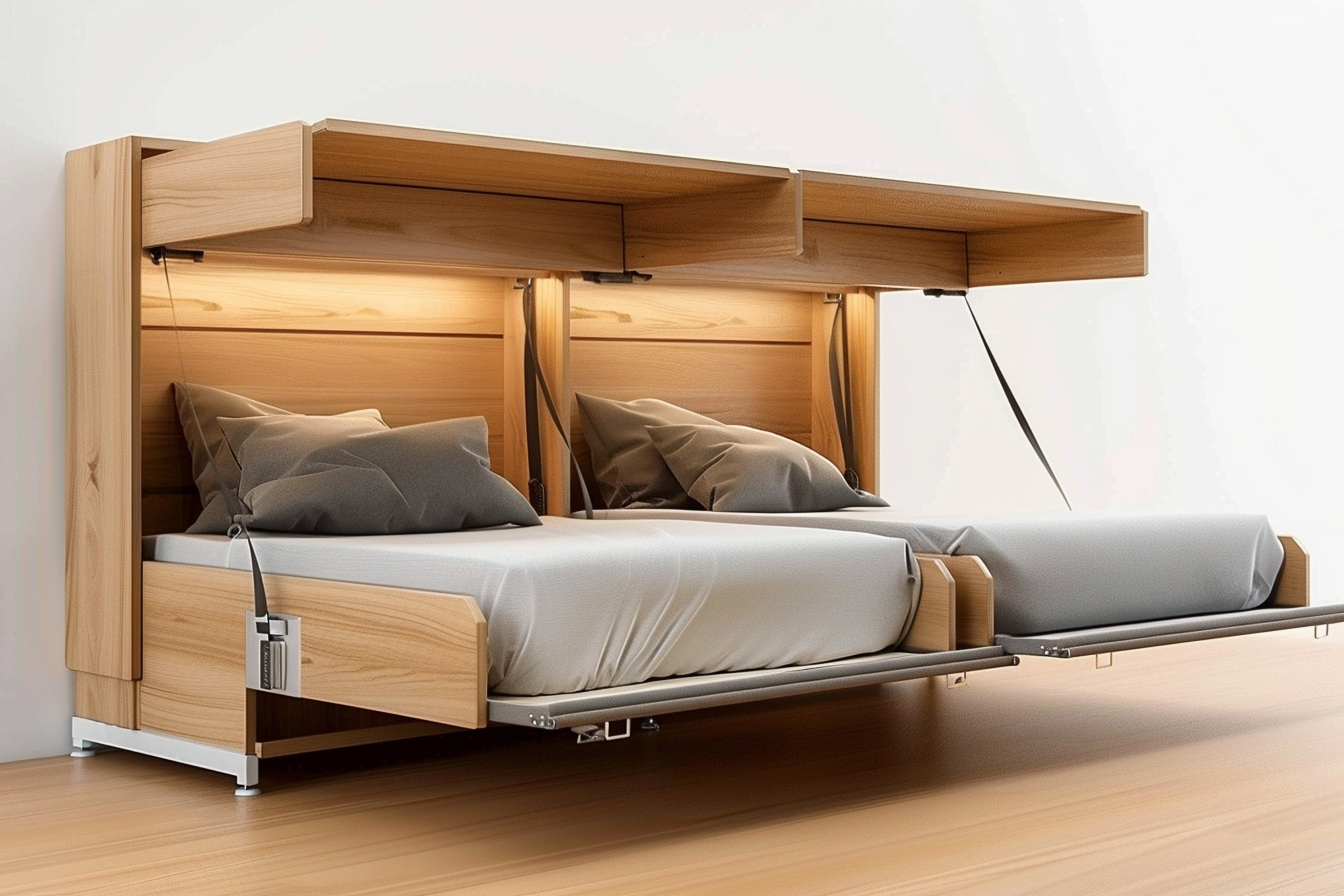Maximizing Small Bedrooms: Design Tricks for Tiny Spaces
Bedrooms are our personal sanctuaries, but not everyone has the luxury of sprawling square footage. As urban living becomes increasingly common and housing costs soar, many find themselves grappling with compact sleeping quarters. The challenge of creating a functional, comfortable, and aesthetically pleasing bedroom in a limited space has become a pressing concern for countless individuals. However, with clever design strategies and innovative solutions, even the tiniest of bedrooms can be transformed into cozy retreats that maximize every inch. This article delves into the art of small bedroom design, exploring techniques that can help turn spatial constraints into opportunities for creativity and efficient living.

The Psychology of Small Spaces
Understanding the psychological impact of small spaces is crucial when approaching bedroom design. Compact rooms can feel claustrophobic and overwhelming if not properly arranged. However, research in environmental psychology suggests that well-designed small spaces can actually promote a sense of coziness and security. The key lies in creating a balance between functionality and aesthetics. By carefully considering color schemes, lighting, and furniture placement, designers can manipulate the perception of space, making a room feel larger and more inviting than its actual dimensions suggest.
Multifunctional Furniture: The Space-Saving Superhero
In small bedrooms, every piece of furniture must earn its keep. Multifunctional pieces have become the cornerstone of efficient small-space design. Murphy beds, which can be folded up against the wall when not in use, have seen a resurgence in popularity. Modern iterations of these space-saving marvels often incorporate desks or shelving units, allowing a bedroom to double as a home office during the day. Similarly, ottoman beds with built-in storage compartments provide a clever solution for hiding away extra linens, out-of-season clothing, or rarely used items without sacrificing precious floor space.
Vertical Thinking: Utilizing Wall Space
When floor space is at a premium, the walls become a valuable asset. Vertical storage solutions can dramatically increase a room’s storage capacity without encroaching on the limited floor area. Floor-to-ceiling built-in wardrobes, floating shelves, and wall-mounted cabinets are all effective ways to maximize vertical space. Some innovative designs even incorporate fold-down desks or dining tables into wall units, creating instant workspaces or eating areas that can be tucked away when not needed. By thinking vertically, homeowners can keep the floor clear, creating an illusion of spaciousness while still meeting their storage needs.
The Illusion of Space: Mirrors and Light
One of the oldest tricks in the interior design playbook is the use of mirrors to create the illusion of more space. In small bedrooms, this technique can be particularly effective. A large mirror positioned opposite a window can reflect natural light, making the room appear brighter and more open. Mirrored closet doors serve a dual purpose, providing both a full-length mirror for dressing and visually doubling the perceived size of the room. Lighting also plays a crucial role in small bedroom design. Layered lighting, including ambient, task, and accent lights, can create depth and dimension in a compact space. Wall sconces or pendant lights can free up surface space on nightstands, while under-bed LED strips can add a soft glow that makes the room feel larger.
Color and Pattern: Small Space, Big Impact
The color palette chosen for a small bedroom can significantly influence how spacious it feels. While conventional wisdom often suggests sticking to light colors to open up a space, modern designers are challenging this notion. Dark, rich colors can create a cozy, cocoon-like atmosphere that embraces the room’s compact nature rather than fighting against it. For those who prefer a more open feel, monochromatic color schemes can blur the boundaries of the room, making it appear larger. When it comes to patterns, large-scale prints can actually make a small room feel more expansive by drawing the eye across the space. The key is to use patterns judiciously, balancing them with solid colors to avoid overwhelming the room.
Minimalism and Organization: Less is More
In small bedrooms, clutter is the enemy of both aesthetics and functionality. Embracing minimalism can help create a sense of calm and order in limited spaces. This doesn’t mean stripping the room of personality, but rather being intentional about each item included in the space. Adopting a “one in, one out” policy for possessions can help maintain a clutter-free environment. Creative storage solutions, such as under-bed boxes, over-door organizers, and vacuum-sealed bags for seasonal clothing, can help keep necessary items out of sight. Regular decluttering sessions are essential for maintaining a serene small bedroom environment.
Technology Integration for Smart Small Spaces
As technology continues to evolve, it offers new possibilities for maximizing small bedroom spaces. Smart home devices can control lighting, temperature, and even window treatments, eliminating the need for bulky control panels or multiple remotes. Wireless charging pads built into nightstands or headboards can reduce cord clutter. Projector systems that turn blank walls into screens for entertainment or virtual windows can eliminate the need for TVs or artwork. These tech-savvy solutions not only save space but also add a layer of modern convenience to compact living quarters.
In conclusion, designing a small bedroom requires creativity, ingenuity, and a willingness to think outside the box. By embracing the unique challenges of compact spaces, homeowners and designers can create bedrooms that are not just functional, but truly delightful. The key lies in seeing spatial limitations not as obstacles, but as opportunities for innovative design solutions. With careful planning and a touch of imagination, even the tiniest bedroom can become a spacious-feeling sanctuary that meets all of its occupant’s needs and desires.






